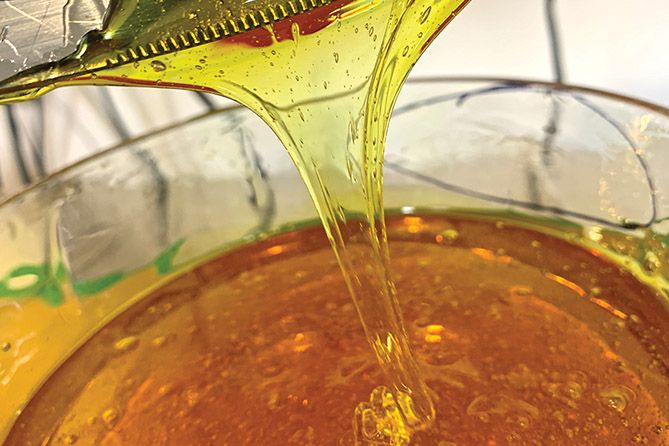The cannabis-extraction process is highly technical and has many variables and moving parts, all of which can affect the consistency of the final product.
Achieving consistent results in a cannabis extraction lab requires keen attention to detail, and it all starts with the flower used for extraction.
Marijuana processors who are concerned with making a high-quality, dependable product should consider:
- Sourcing from growers who provide reliably consistent product.
- Developing standard operating procedures for the extraction process.
- Having products tested in-house as well as by a third-party laboratory.
“Every step in the process matters and has a very big impact on the quality of the product,” said Jorge Useche, the Bogota, Colombia-based research and development director for cannabis company Clever Leaves.
Reliable Sources
For Useche, the dry flower his company uses in the extraction process has a large impact on the consistency of its finished goods.
Before Clever Leaves brings in a shipment of flower, the humidity and microbial concentration is tightly controlled and tested. Then, when the shipment arrives at the processing facility after traveling up to 62 miles, Useche repeats the tests to understand how shipping might have changed the flower?s sensory properties.
For some of its extracted products, Clever Leaves works with only three strains: one high in CBD and two high in THC. The company has about 25 products in development using these strains. Useche said using only three strains rather than many different types of input material helps Clever Leaves ensure consistency and quality.
For Chris Barone, chief science officer of Denver-based Clear Cannabis, it’s crucial that staffers understand the importance of proper procurement, meaning the company’s flower buyers must be on the lookout for pesticides or any other contaminants that could affect the quality and consistency of the final product.
“Some starting materials can yield weird flavors,” he explained.
Quality input material is even more important to creating a consistent product than the extraction process itself, agreed Nick Tennant, chief technology officer at Precision Extraction Solutions, a hemp- and marijuana-extraction company based in Detroit.
Tennant recommends using a single-source genetic strain from clones rather than grown from seed. A clone will be an exact genetic replica every time, while seeds can display variability.
The clones should all be grown the same way, under the same lights and with the same nutrients.
Tennant said most variations in cannabis extracts come from a fluctuation in the terpenes and cannabinoids, so providing feedback to cultivators is important.
“Working with the growers is pretty easy,” Tennant said. “Most (cultivators) are pretty savvy when it comes to keeping mother plants and genetics stable.”
Proper Procedures
For Barone at Clear Cannabis, consistency arises from a company’s ability to generate standard operating procedures and protocols, which include documenting much of the process. He recommends staffing an extraction lab with operators who understand the importance of that documentation and keeping checklists to track every step.
Tennant at Precision Extraction Solutions agrees that stability and consistency in products can be achieved by keeping a close eye on standard operating procedures to maintain variables such as temperature and humidity.
In addition to following European Union-Good Manufacturing Practice in its CO2 extraction lab, Clever Leaves follows Good Agricultural Practices established by Colombian authorities.
Test It Twice
Clever Leaves sends its finished products to be tested by a third-party laboratory to verify its own test results.
“We have an internal lab that has the capability to evaluate cannabinoids and other parameters like humidity,” Useche said.
Barone has his own internal quality-control process, which includes testing his flower for cannabinoid content as well as fats and lipids to evaluate consistency. His quality-control team also tests packaging and cartridges.
Clear Cannabis staffs several people in departments across the company to focus on testing for consistency. “That’s the first line of defense,” he said of the testing.
Bulk oil is tested for homogeneity; the product is tested again once it’s loaded into hardware such as vape pens. The team also grades the final products.
“We have someone who will oversee all of the batches and test all of them to make sure they taste right,” he said. “You want to make sure the Blue Razz tastes like Blue Razz.”





